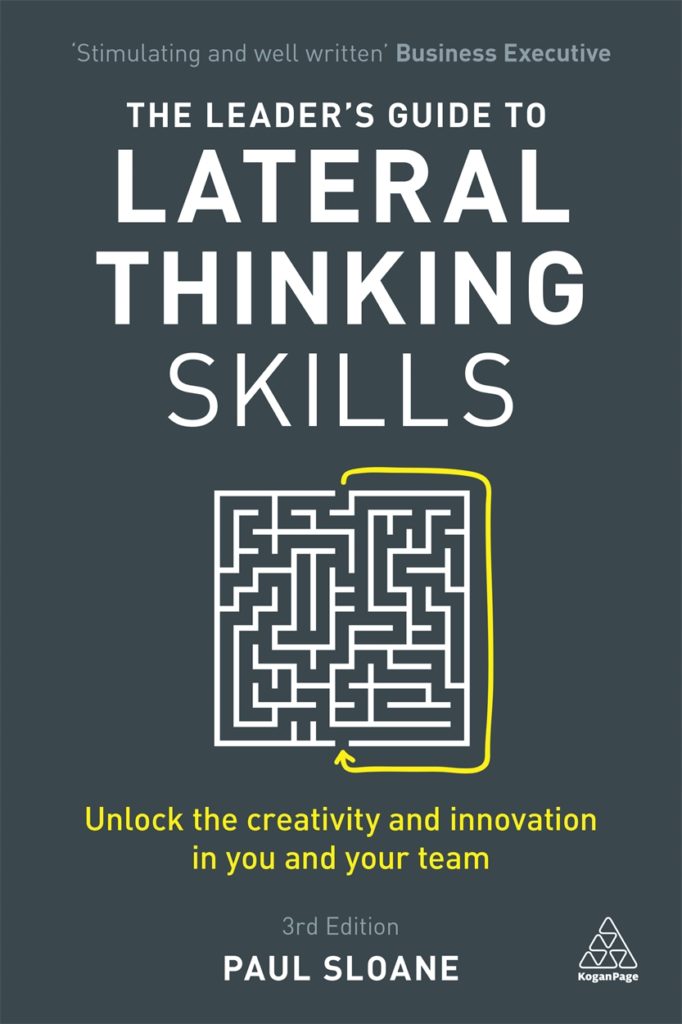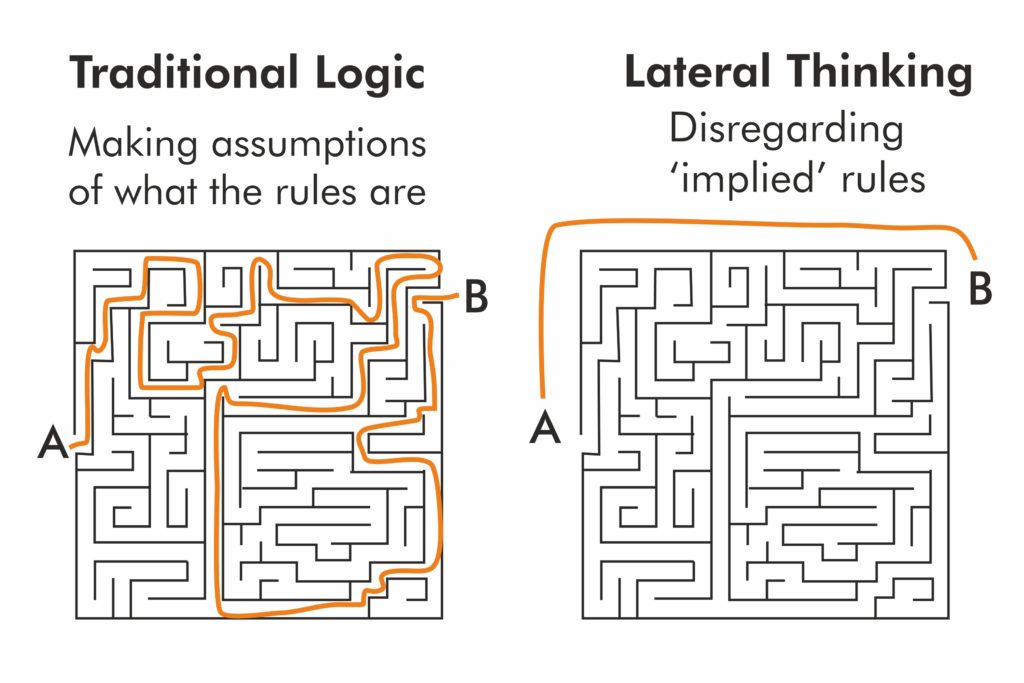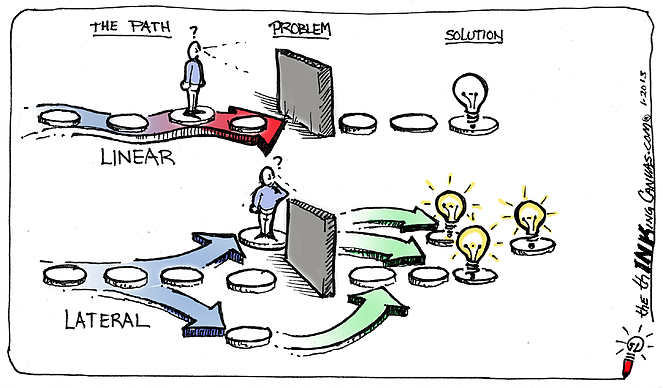
The book of the month is…
The Leader’s Guide to Lateral Thinking Skills, written by Paul Sloane (author and corporate public speaker on innovation), will teach you dynamic and up-to-date techniques to unleash the creative energies of your people and show you how to put the techniques to work immediately.
This book describes how the lateral leader develops the vision, culture and processes that transform a regular business into an innovation one. The book is packed with real-life examples, practical methods and lateral thinking exercises you can put to work today. Lateral thinking puzzles at the end of each chapter illustrate the importance of thinking outside the box.
Lateral Thinking

According to Wikipedia, Lateral thinking is a manner of solving problems using an indirect and creative approach via reasoning that is not immediately obvious. It involves ideas that may not be obtainable using only traditional step-by-step logic.
The term was promulgated in 1967 by Edward de Bono. He cites as an example the Judgment of Solomon, where King Solomon resolves a dispute over the parentage of a child by calling for the child to be cut in half, and making his judgment according to the reactions that this order receives.
According to de Bono, lateral thinking deliberately distances itself from the standard perception of creativity as “vertical” logic (the classic method for problem solving).
“A manner of solving problems using an indirect and creative approach via reasoning that is not immediately obvious”
So, what is lateral thinking?

- Lateral thinking is a non-linear way of thinking, i.e. seeking solutions in more than one direction;
- Lateral thinking involves an indirect and creative approach;
- Sometimes ridiculous ideas also lead to more creative and productive ideas.
- Practising immediate, unobvious reasoning is also a very effective tool for lateral thinking;
- Evolving ideas that may not be logically perfect is an important aspect of understanding the lateral thinking;
- Lateral thinking gives birth to more than one possibility or multiple solutions for the same problem because can be more than one way of looking at the same problem.
- The lateral thinking encourages one to be more and more generative than selective.
“You can use lateral thinking to turn your organization around”
How Lateral Thinking is used today?

Inside the companies Lateral Thinking can be used for:
- Problem Solving
- Periodic reassessment
- Formulate new ideas
- Process perceptual choice
- Prevent sharp divisions and egocentric assessment
“Intelligence is something we are born with. Thinking is a skill that must be learned.” – Dr. Edward de Bono
If you are only going to read one business book this year, this is the one. No modern business leader should be unaware of these insights.
